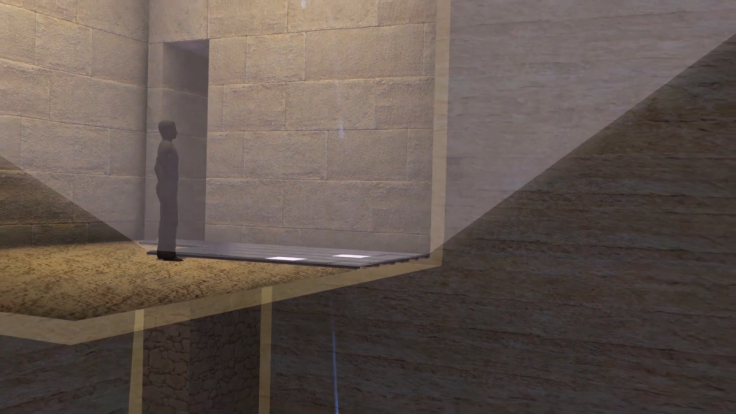Cosmic particles reveal what the inside of ancient Egypt's pyramids look like
The mystery surrounding the pyramids of Egypt may one day be revealed thanks to a groundbreaking new technology, which shows what the inside of a pyramid looks like for the first time. The group of scientists and archaeologists behind the Scans Pyramids project have revealed their first findings since they began last year to internally map the Bent Pyramid, a 345ft monument located 25 miles south of Cairo in the town of Dashur.
Using the muon particles from cosmic rays in a similar ways to X-rays, scientists exposed the pyramid to the particles for 40 days in order for them to penetrate deep into the stone and gauge how thick the stonework is. From that, the project has been able to create an internal 3D map of the the pyramid and the various passageways and chambers housed within its structure.
Muons are created through collisions between cosmic rays in the upper layers of Earth's atmosphere. They then fall to the ground and pass through structures and empty spaces. However, they can be absorbed or deflected by harder surfaces. Muon detectors placed inside the pyramids then provide data on contrasts within the structure.

The Scans Pyramids project was launched in 2015 in a bid to uncover secrets about Egypt's pyramids – such as hidden rooms and passages, and details on how they were built. They announced that through using infrared cameras they had found "thermal anomalies" at the base of the Great Pyramid in Giza in November last year – which the team says could be a sign of a secret passage within the 4,500-year-old structure. The project now plans to use both infrared cameras and muon particles to study the Great Pyramid and Khafre Pyramid in Giza and the Red Pyramid in Dashur.
Despite being around 4,500 years old, no-one is sure exactly how the pyramids of ancient Egypt were built. But the project, which will continue running until the end of 2016, hopes to find a solution to this mystery.

Hany Helal, vice president of the HIP Institute, which is coordinating the project, said: "For the construction of the pyramids, there is no single theory that is 100% proven or checked. They are all theories and hypotheses. What we are trying to do with the new technology, we would like to either confirm or change or upgrade or modify the hypotheses that we have on how the pyramids were constructed."
The Bent Pyramid in Dahshur was built around 2600BC by Sneferu, the founder of the 4th dynasty during the Old Kingdom. It is considered a transitional pyramid between the step-sided and smooth-sided pyramids. The pyramid rises at a 54-degree inclination but the top is shallower at 43 degrees, giving it its bent appearance.
© Copyright IBTimes 2024. All rights reserved.






















